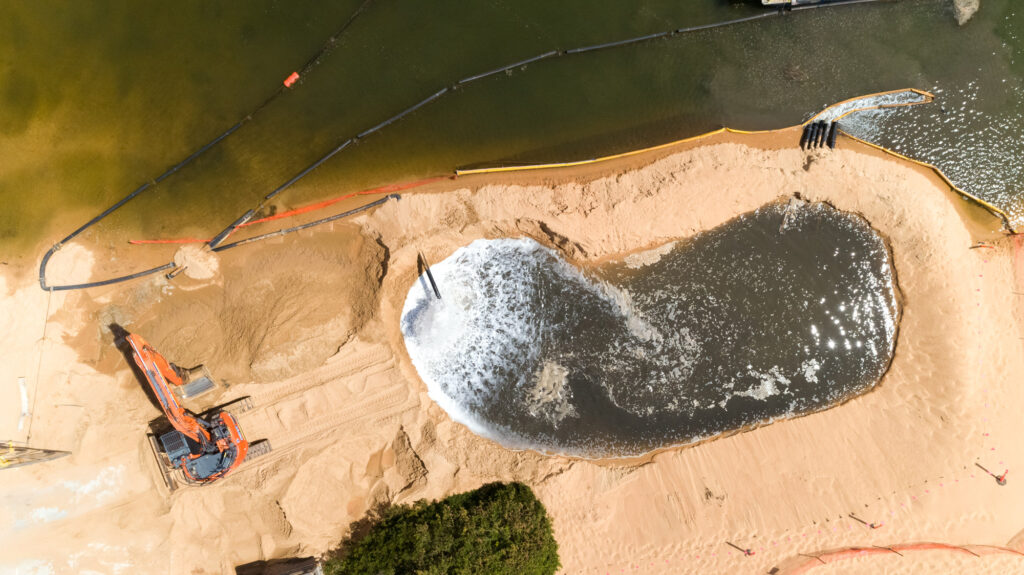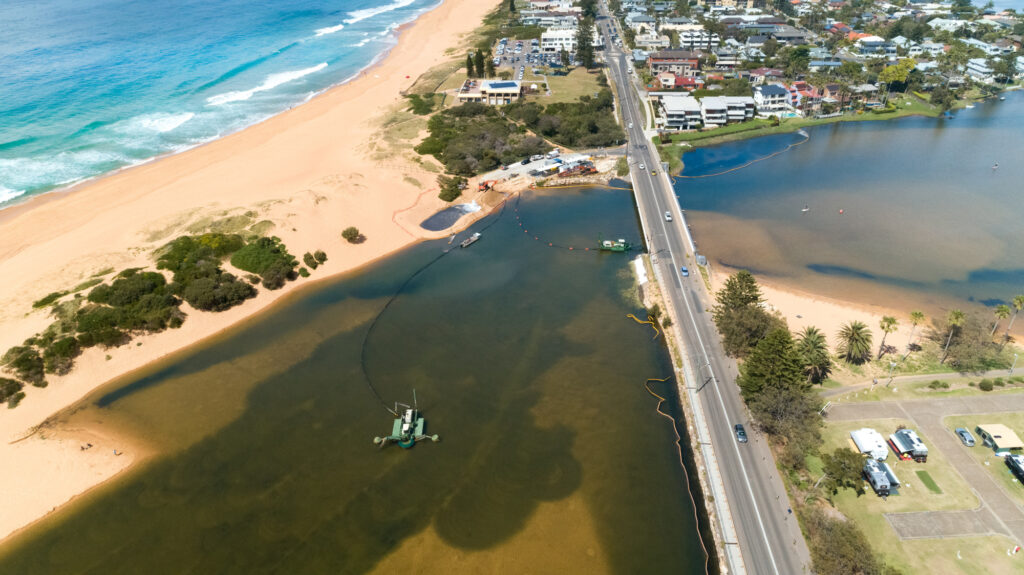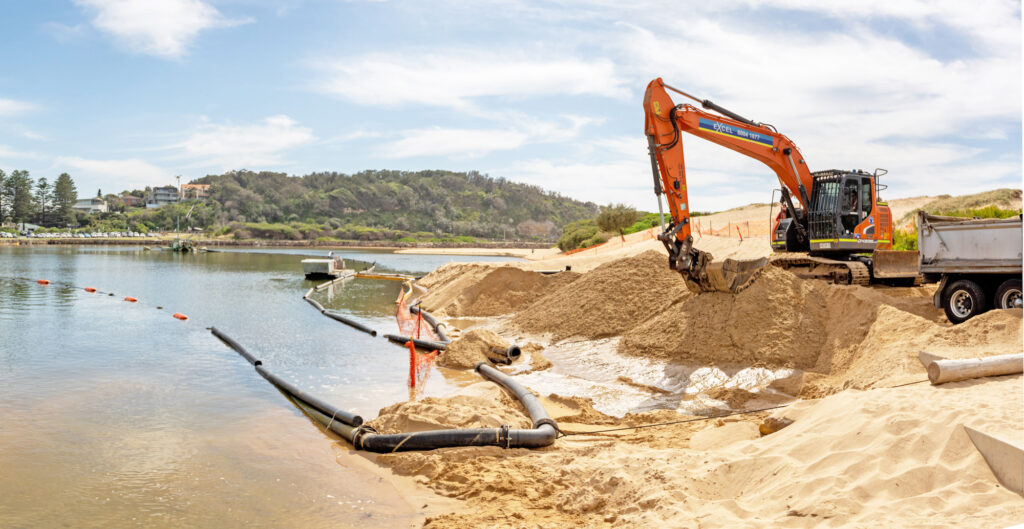The Narrabeen Lagoon in Pittwater, Australia, is the largest coastal lagoon in the Sydney region. It is a very popular destination for enthusiasts of leisure activities such as swimming, kayaking, snorkeling, sailing, and fishing. For locals, it offers a unique lifestyle of outdoor recreation. The entrance to Narrabeen Lagoon periodically becomes clogged up and needs clearing to prevent flooding. Last year the task was assigned to Dredging Systems, who chose Watermaster as their tool of preference to ensure the best outcome..
Lagoons are defined as bodies of water that, in their natural state, remain closed from the surrounding sea until rainfall raises water levels. The excess water then breaks out over the sand barrier, creating a new channel to the sea that lowers the water level. The sea, on the other hand, constantly brings in new sand on the lagoon entrance, effectively blocking it again. In the case of heavy rainfall following long periods of drought, the sand barrier may have grown high enough to direct excess water inland rather than into the sea. The ensuing floods pose a risk to homes and businesses.
In the past, Narrabeen Lagoon water masses have repeatedly broken out, and the flooding on nearby residential areas has impacted the lives of thousands of people. Climate change with its heavier rainfall and more frequent storms is exacerbating the situation.
Ever since 1906, when Warringah Shire Council was formed, the lagoon has been periodically dredged. Earlier, this was done by digging with multiple excavators placed at a short distance from each other, passing the excavated sand along. The method was not very efficient or safe, and required handling the same masses of sand multiple times. The land-based excavators also had a limited operational area and could not access the deeper parts of the lagoon.
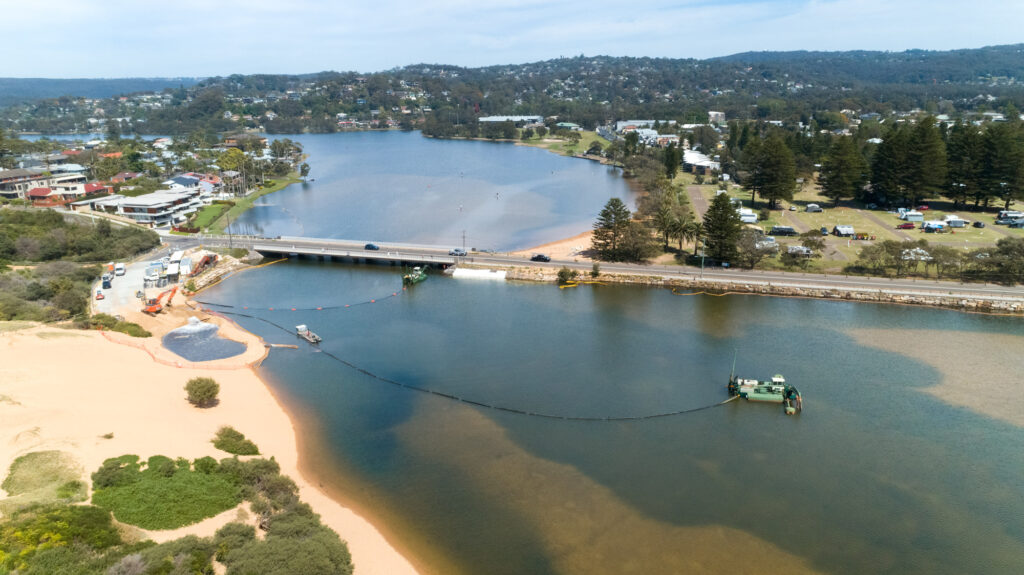
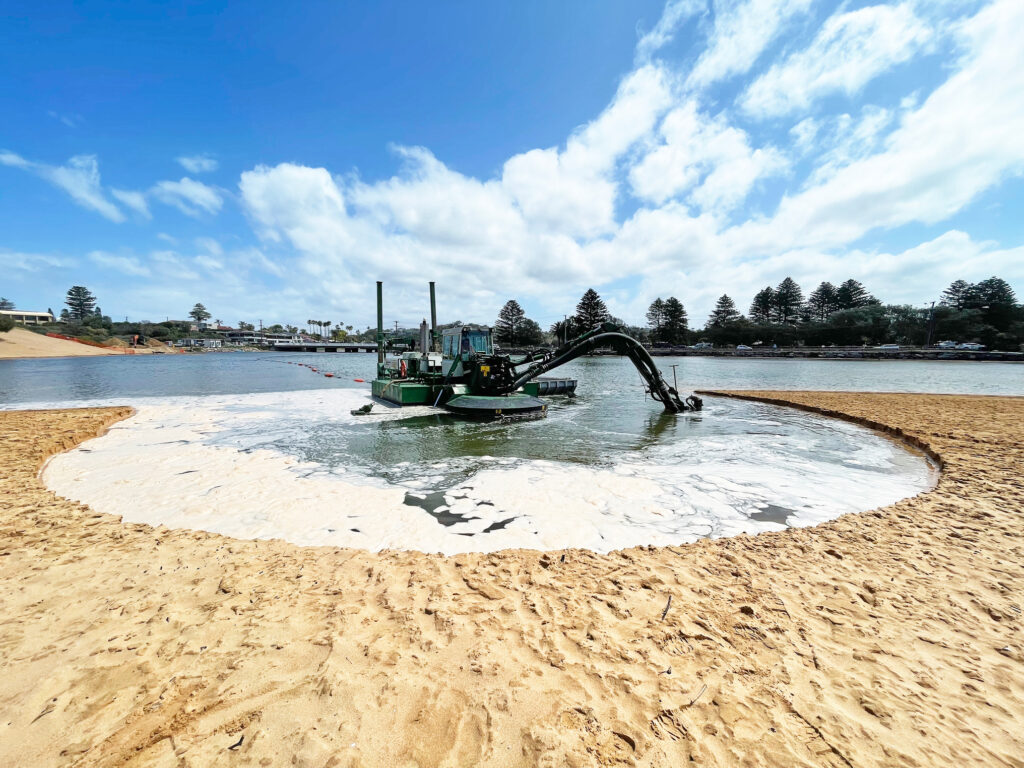
Novel Approach Brings Results
In 2021, the Northern Beaches Council decided to take a proactive approach to the problem and have the Narrabeen Lagoon sea entrance already opened when water levels showed first signs of rising. Dredging at the optimal moment when flooding does not yet occur, but there is sufficient water in the lagoon makes the force of the water masses work in concert with dredging efforts, helping to deepen the channel more effectively.
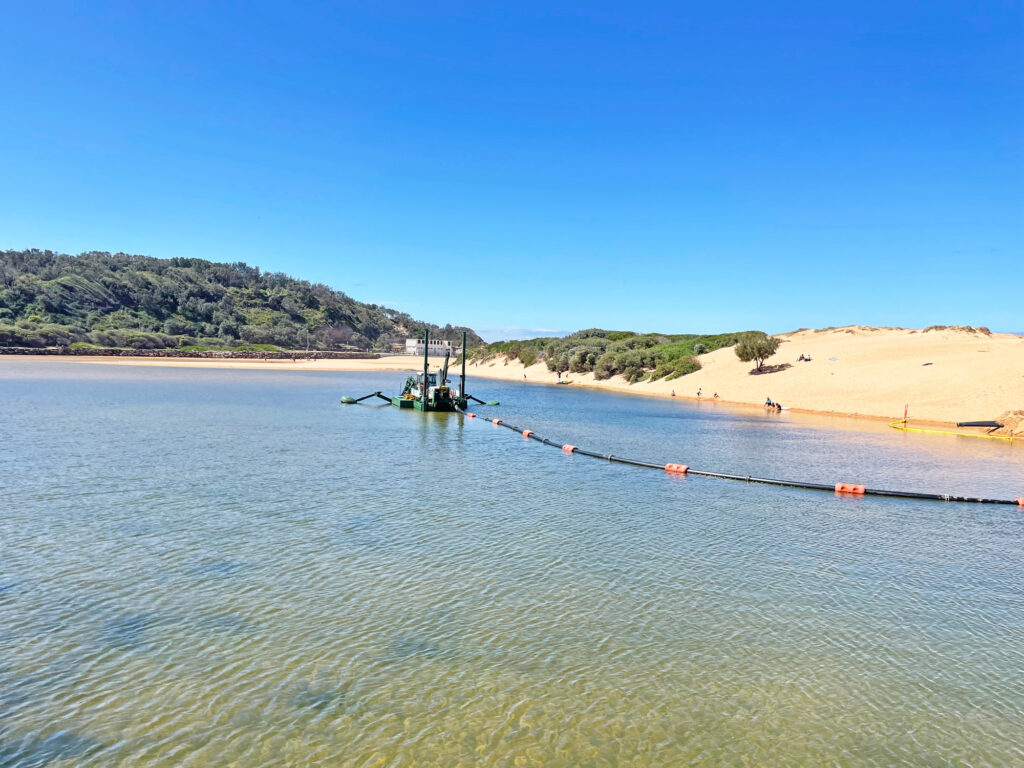
The Council assigned the task to the local company Dredging Systems, which specializes in shallow-water restoration projects with modern equipment and techniques. Mr. Anto Pratten, the founder and director of Dredging Systems, mobilized two amphibious Watermaster dredgers for the project. Watermaster is a versatile device suited for any jobs needed in a water restoration project: suction dredging with Watermaster’s cutter pump, excavating with a selection of buckets, piling with a vibratory pile driver, and removing vegetation with a rake. This technology enables doing more with less since one Watermaster can carry out the work of many single-purpose machines. Watermaster is a reliable, serially produced piece of machinery from Finland that is used the world over.
Watermaster’s mobility comes in handy in any project, also at the shallow and busy Narrabeen Lagoon. After being transported to the work site on a truck, Watermaster “walked” into the water on its own. Being self-propelled, the Watermaster needed no help to move in the water either. Nor did it need outside help for anchoring and working. This translates into no cranes, no tugboats, no assisting vessels, and no separate anchors and wire cables. Also, as no set-up is necessary, the bulk of the time spent at a site goes into actual productive work.
This was the first time the removal of excess sand build-up from the Narrabeen Lagoon was carried out hydraulically by suction dredging instead of mechanically excavating. Watermasters dredged 40,000 m3 of sand into a dewatering basin on the shore through a floating pipeline in one go without having to handle the same materials many times, as was the case earlier with conventional machinery. The sand was then scooped up by an excavator onto trucks and taken to nearby Collaroy beach, where erosion had depleted the sands. Watermaster can work in open waters even six meters deep, and thus easily covered the whole lagoon area. Thanks to Watermaster’s smooth independent operation, the lagoon was never closed to the public during the project, and people could paddle board, swim, fish, and enjoy the lagoon as usual.
Dredging Systems also did civil engineering work around and under the bridge, depositing hundreds of tons of rocks to stop the erosion around the bridge pillars. They did not need additional machinery for the job since multipurpose Watermaster was perfect for this application, too. Changing the cutter pump to a bucket took about 30 minutes, and Watermaster was soon carrying out its next task. Watermaster anchors firmly with its four stabilizers, so it had no trouble lifting the heavy rocks steadily and safely in place using its strong excavator arm.
Dredging Pays Off
As a result of Watermaster dredging, the Narrabeen Lagoon area is now more flood resilient. Locals can once again live in peace and enjoy the outdoors normally. Targeted dredging is still occasionally needed, but thanks to Dredging Systems’ Watermasters, it can now be done more quickly, efficiently, and safely.
The Narrabeen Lagoon is situated in the eastern coast of Australia, north of Sydney
Protecting the local community from flooding in a smart way
Watermaster dredgers pumped the accumulated sand directly to the shore in one go
- Watermasters suction dredge the accumulated sand directly to the shore
- The sand is dewatered
- An excavator lifts the sand into trucks to be transported to nearby beaches
